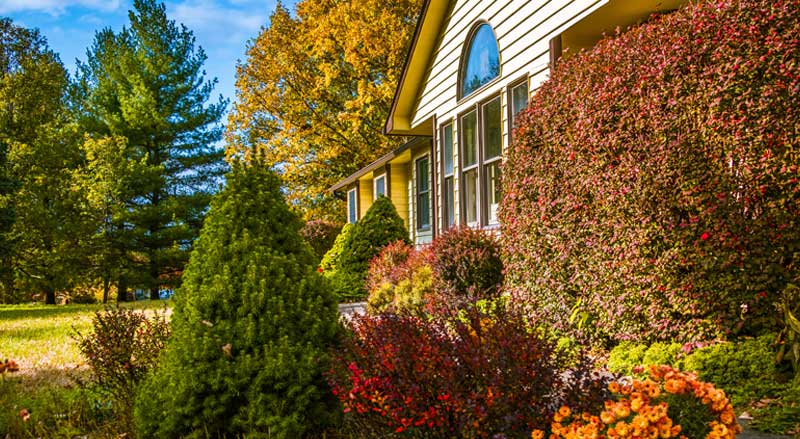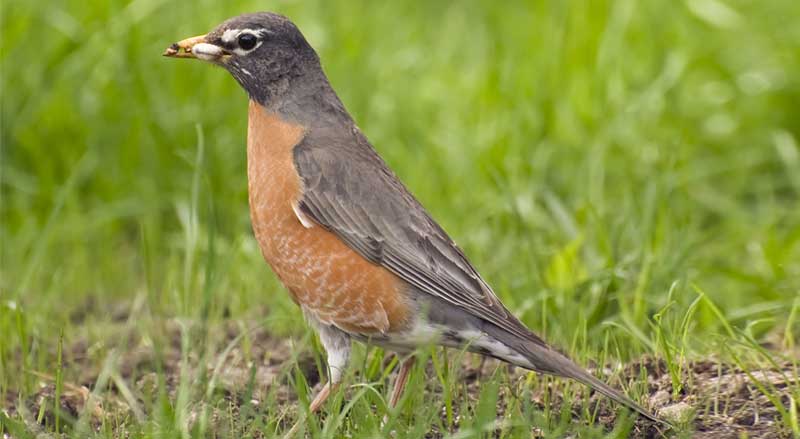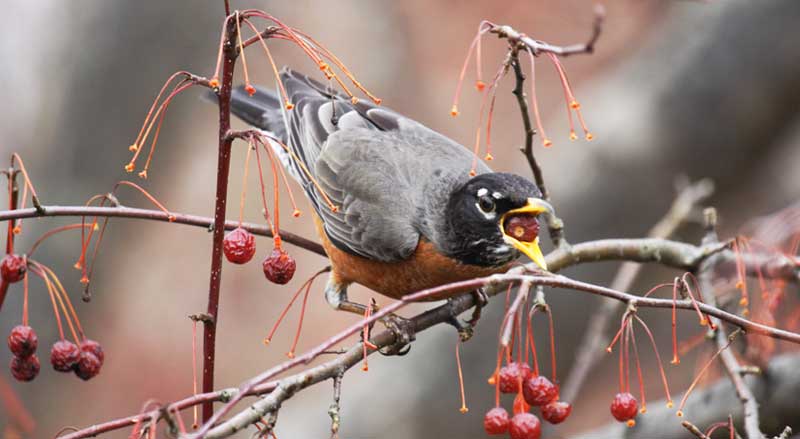Now that fall is here, homeowners are spending more time indoors watching football games than outdoors sitting poolside. Thoughts turn toward upcoming Thanksgiving feasts and away from lawn care.
But late fall is a critical time to prepare your lawn for winter. You’ll want to follow these fall lawn fertilization tips to ensure a lush lawn next spring.
Hot, Dry Summers in NJ
Your lawn has been through a tough summer. High heat, humidity and lengthy dry spells have stressed our New Jersey lawns.
It’s been fun entertaining outdoors. But probably energetic kids and playful pets trampled your lawn. Let’s face it—your lawn’s been through a lot this summer!
Some grass has even gone into early dormancy to survive.
Improper mowing may have stressed your lawn even further by leaving grass too short or too long.
Fall’s the time to show your lawn some much needed TLC.
Fertilize Your Lawn in the Fall
Fall fertilization is your lawn’s last chance to be fortified before the upcoming winter and spring. Even the most pampered lawns need to be prepared for the harsh weather to come.
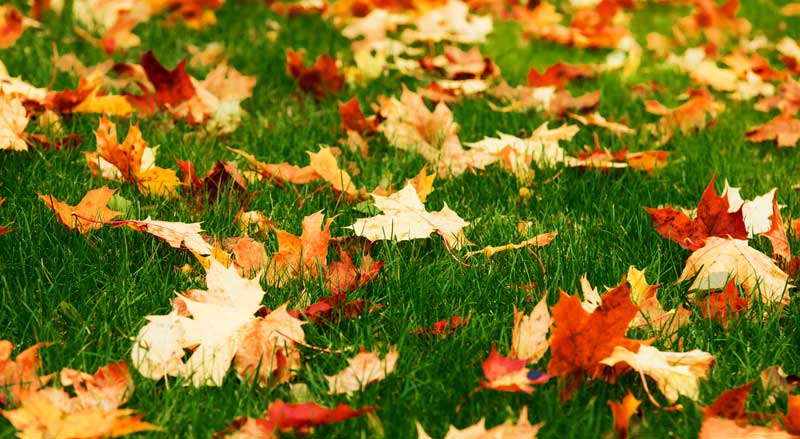
Lawn care experts recommend you fertilize your lawn in October or November. In fact, they regard the fall as the most important fertilization time of the calendar year.
Grass becomes dormant in the winter. But fall fertilization gives grass roots an extra boost of nutrition; it helps them be more resilient in winter and healthier in the spring.
When Should I Fertilize in the Fall?
Which month is best to fertilize?
You can fertilize your lawn at different times during the fall. The month you fertilize determines which type of fertilizer works best.
Often fertilization takes place in September in the early fall and then again in late October or November—several weeks before the first frost.
Time of Day Matters
Fall fertilization should occur in the morning or early evening. Afternoon high temperatures can interfere with the fertilization process.
Watch the Weather
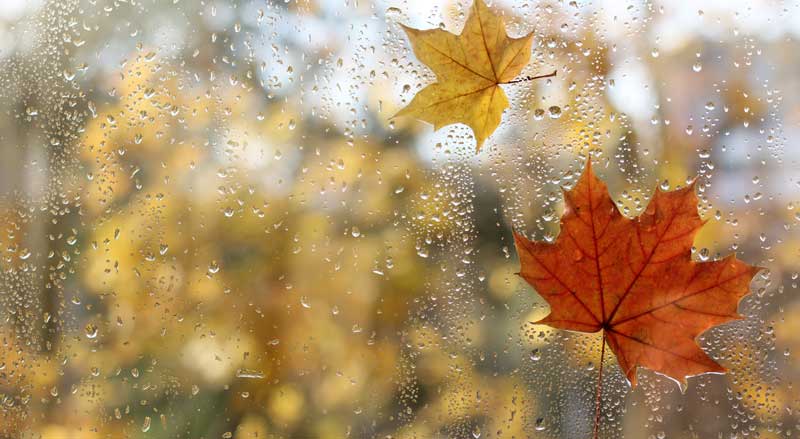
Don’t fertilize if the daily forecast calls for storms, or if the grass is already wet. If this is the case, delay fertilization by a day or two.
Heavy rain can wash away fertilizer and cause pollution of local waterways.
It’s okay to proceed if there’s a call for only light rain.
Don’t Forget to Mow
Mow your lawn before fertilization. Leave some grass clippings behind to protect roots.
Types of Lawn Fertilizer
Fertilizers can be granular or liquid. Sprayed liquid fertilizers deliver smaller quantities of nutrients than do granular products. Treatments may need to be repeated.
Whatever the form, there are many blends available. However, the weekend gardener often finds this confusing.
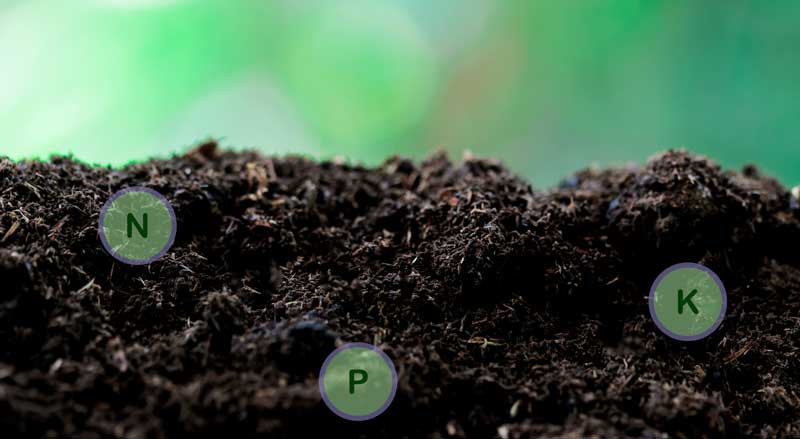
Each fertilizer has three numbers (NPK), such as 24-0-12, on the package. These numbers represent the percentages of nitrogen, phosphorous and potassium in the product.
- Nitrogen helps grass become green and lush
- Phosphorous contributes to healthy root development
- Potassium helps lawns fight disease, thrive in bad weather, and grow vigorously
Some municipalities don’t allow phosphorous in fertilizers.
In fact, the state of New Jersey has one of the most restrictive fertilizer content standards in the nation. NJ fertilizers are strictly regulated by the New Jersey Department of Environmental Protection.
This regulation applies to nitrogen and phosphorous and aims to reduce the impact of fertilizers on waterways. Too much of these nutrients can cause excessive algae and weed growth in waterways and ultimately hurt aquatic life.
NJ regulations demand zero phosphorus fertilizers, with certain exceptions. Also, 20% of fertilizer nitrogen must be slow releasing. NJ residents must pay particular attention to these guidelines when they purchase lawn fertilizer online.
How to Choose a Good Fertilizer
A soil test will reveal which nutrients and micronutrients your lawn needs.
Soil tests are available at your local garden store. Or a landscape professional, like Landscape Solutions, can perform this test for you.
Your landscaper or local gardening center can recommend the best fertilizer mix based on the test results.
Weed and Grub Control
Don’t forget about weeds and insect pests. If untreated in the fall, they can return with a vengeance in the spring.
Weed Control
Apply weed killers one-week before fertilization.
Post-emergent weed killers destroy weeds that are actively growing. The fall is a good time to apply these herbicides.
For this type of weed killer, avoid mowing your lawn for 5 days before application and 2 days after. Weed killer is most effective on weeds with plenty of leaves to absorb the treatment.
If your yard only has grass and crabgrass, it’s fine to use a fertilizer and weed control combination. However, this is not a good idea if your lawn includes decorative flowers or leaf trees or shrubs. You want to be sure that you only kill off the weeds.
If you have questions about the best way to proceed, you should contact your lawn care professional.
Nitrogen in fertilizer also discourages weed growth.
Grub Control
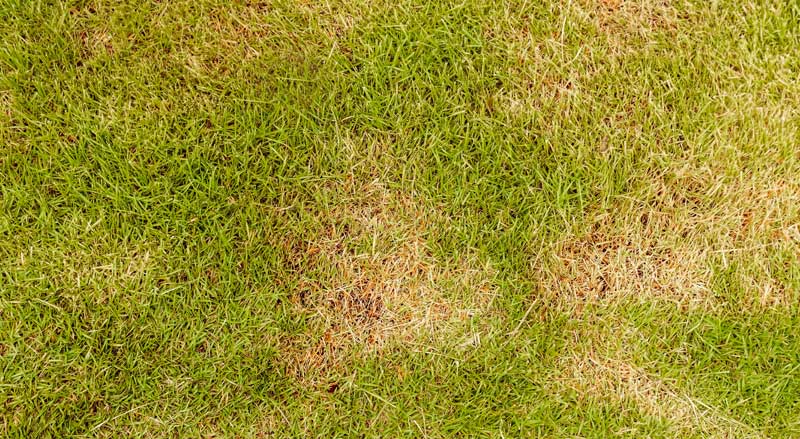
If your lawn has spreading brown or bare patches, your lawn is probably infested with grubs. This problem usually shows up in lawns from mid-September to November or from March to early May.
Grubs lay eggs in early summer and eggs hatch in mid-August. The new grubs immediately cause lawn damage.
Ideally, you should do grub control in late summer or early fall when young grubs are most vulnerable. Springtime treatment isn’t very effective since grubs don’t each much before they pupate.
Products to Remove and Prevent Grubs
There are several effective grub control products on the market. You can buy them at your local gardening store or contact your landscaper for treatment.
How To Fertilize
Now that you have applied herbicides, purchased the right fertilizer, and checked the weather report, it’s time to get started with the fertilization process.
Read package instructions before starting.
You need a good spreader to distribute the fertilizer evenly. Unevenly distributed fertilizer can burn your lawn.
Follow coverage recommendations. Some gardeners set the spreader distribution to accommodate two passes. This helps ensure uniform coverage.
If instructed, be prepared to water the grass immediately after application.
Once finished, store the well-secured fertilizer bag away from curious children and pets.
Here are additional posts with more fall garden tips:
- September is Lawn Renovation Time including tips on mowing, overseeding, aeration
- Everything About Lawn Renovation Explained including information about seeding and sodding
- The Benefits of Overseeding Your Lawn including how this helps pest control
- What Landscaping Can Be Done in November? outlines fall landscaping musts, including fall cleanup, raking, watering, flower garden care
- 12 Tips to Water Your Lawn More Efficiently shows how to water effectively

